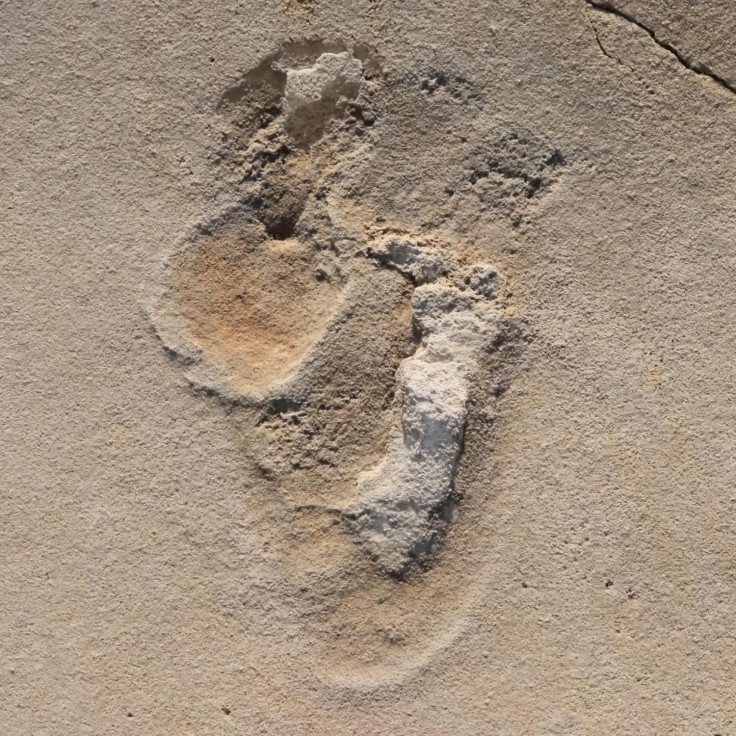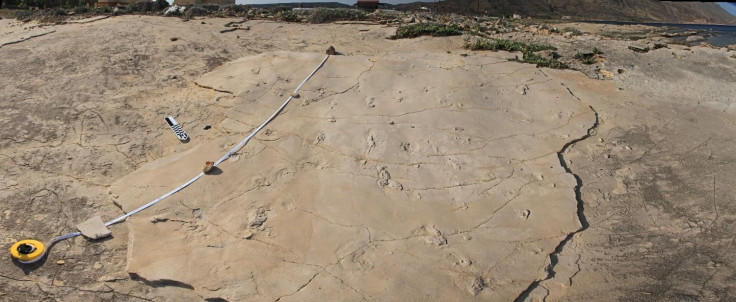Human Footprints From 5.7 Million Years Ago May Rewrite Evolution History

Scientists say they may have found human footprints in Greece that date back to a time when it is commonly believed our ancestors were still only in Africa, potentially changing our ideas of how the species evolved and dispersed.
The footprints, found embedded in rock in an area called Trachilos on the Greek island of Crete, are 5.7 million years old, according to a study in the journal Proceedings of the Geologists’ Association. They “show hominin-like characteristics” — the creature that made the tracks walked on two legs using the soles of its feet; had five toes, with the innermost ones more developed than the outer digits; and did not have any claws. The researchers also noted “the presence of a distinct ball in some of the tracks.”
“Human feet have a very distinctive shape, different from all other land animals,” Uppsala University said in a report about the research. “The feet of our closest relatives, the great apes, look more like a human hand with a thumb-like [big toe] that sticks out to the side.”
Analysis suggests the animal that made the tracks was an ancient member of the human family, but Crete is not within geographical area where our ancestors were known to roam 5.7 million years ago. Another problem is that previously collected fossil evidence suggests that human ancestors had more ape-like feet for more than a million years after this time period, which clashes with the new findings.
“The interpretation of these footprints is potentially controversial,” the scientists wrote.
At the time the potentially human tracks were forged into the Trachilos rock, in the later part of the Miocene geological period, the geography of Crete was different. The island, which now sits in the Mediterranean Sea to the southeast of the Greek mainland, north of the border between Libya and Egypt in northern Africa, was still separating from the rest of Greece. A land bridge connecting western Crete disappeared about 5 million years ago.
“Whatever the exact timing of the separation process, it is clear that Crete never had a direct connection to the southern shore of the Mediterranean,” the study explains. “Its late Miocene mammal fauna, including the Trachilos trackmaker, must have arrived from the north.”
Because there was no connection between Crete and the coast of Africa, if the tracks were indeed made by a human ancestor, it wouldn’t just expand the range of hominins from Africa to Greece — the expanded range would also at minimum have to include the Levant, Asia Minor and the southern Balkans to transport the prehistoric humans all the way there, the scientists said.
That route bringing our ancestors out of Africa would cross at least through western Asian countries along the Mediterranean like Israel, Lebanon and Syria (the Levant); up and west through Turkey (Asia Minor); and perhaps through a final stretch across a country like Bulgaria (the southern Balkans) before landing in mainland Greece and all the way down to Crete.

The authors said they “must also entertain the possibility” that the tracks were not the product of a human ancestor, but rather were made by another yet-to-be-discovered primate that evolved “human-like foot anatomy.”
It would not be the first time that species in different evolutionary lines separately evolved similar characteristics, a phenomenon known as convergent evolution.
“The first of these interpretations is clearly more straightforward,” the authors noted.
However, even if the tracks being made by a human ancestor is a simpler explanation based on our current knowledge of ancient primates, they said nature does not always operate in such a simple fashion.
“What makes this controversial is the age and location of the prints,” researcher Per Ahlberg said in the Uppsala University report. “This discovery challenges the established narrative of early human evolution head-on and is likely to generate a lot of debate. Whether the human origins research community will accept fossil footprints as conclusive evidence of the presence of hominins in the Miocene of Crete remains to be seen.”
© Copyright IBTimes 2025. All rights reserved.





















